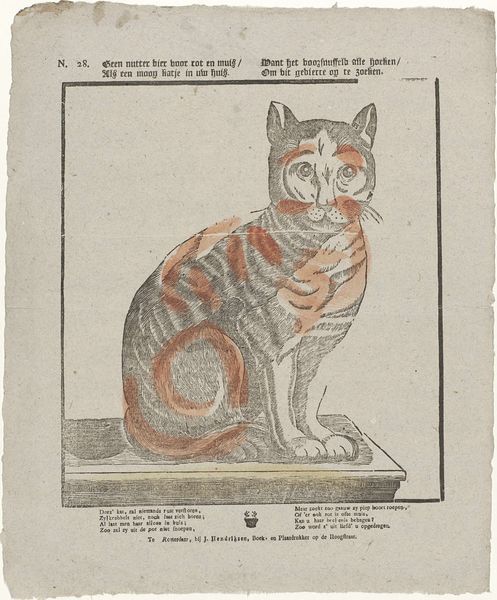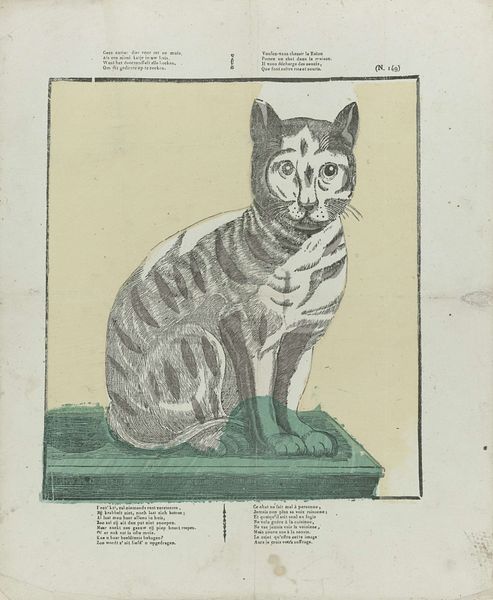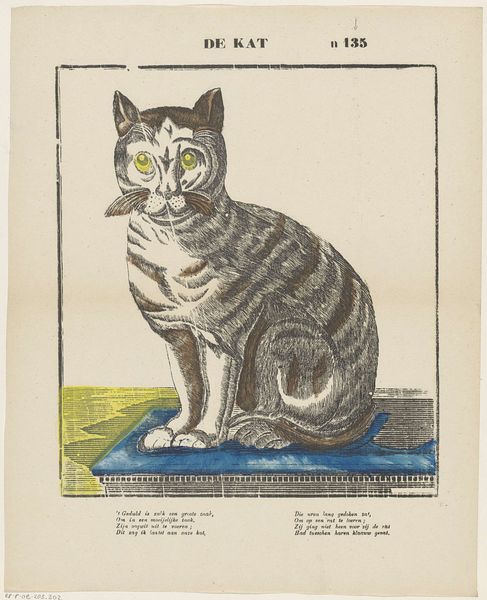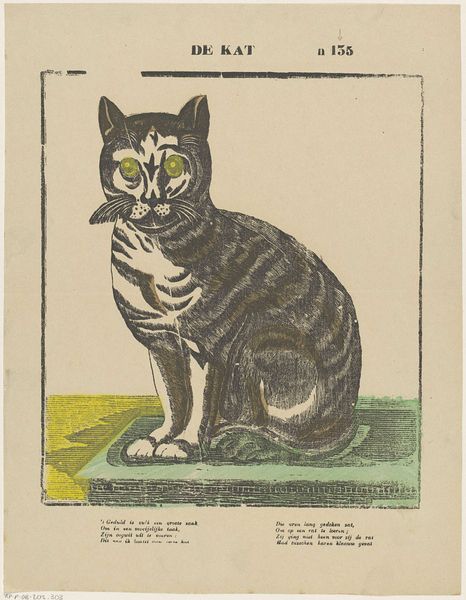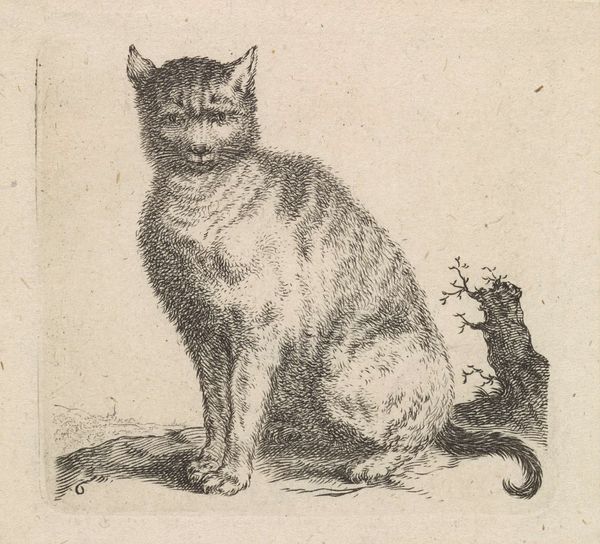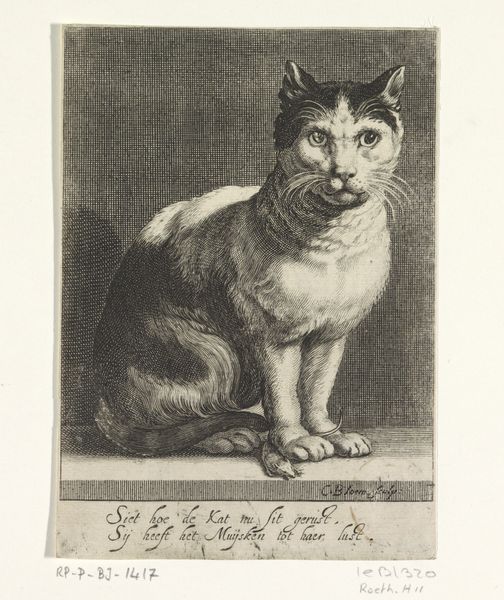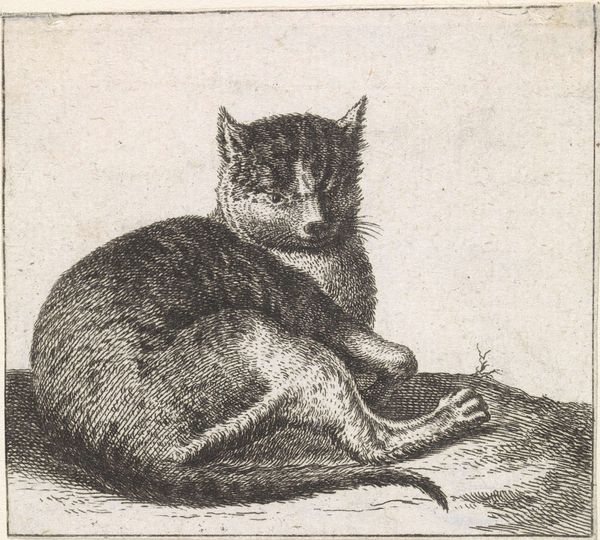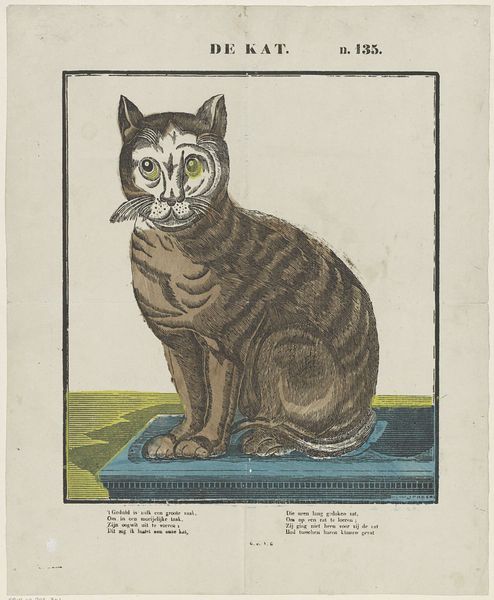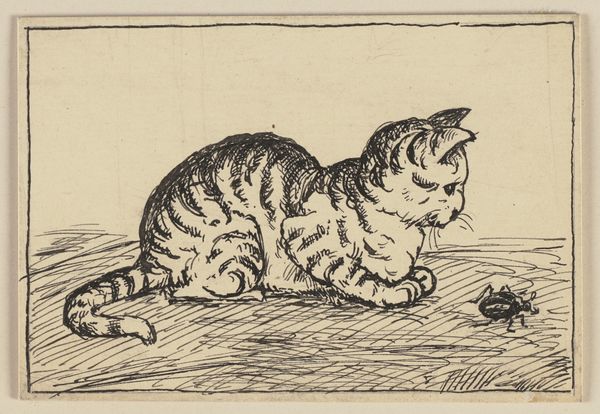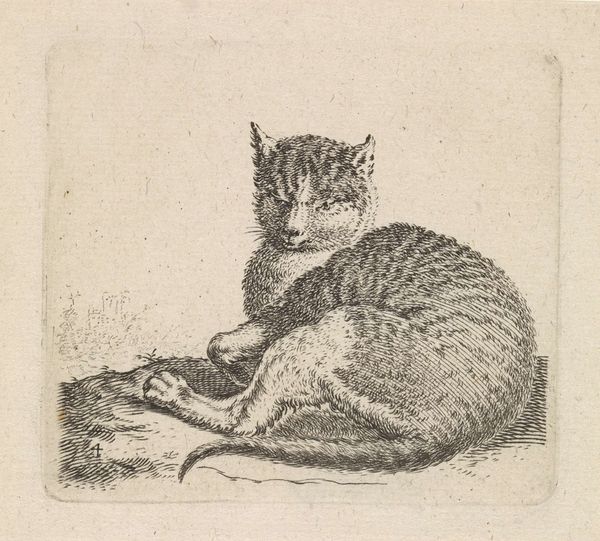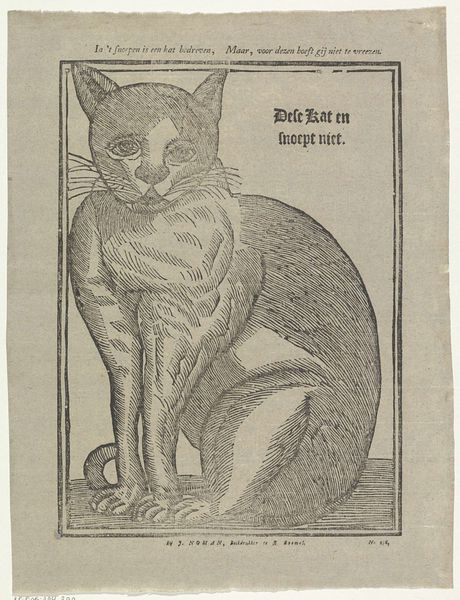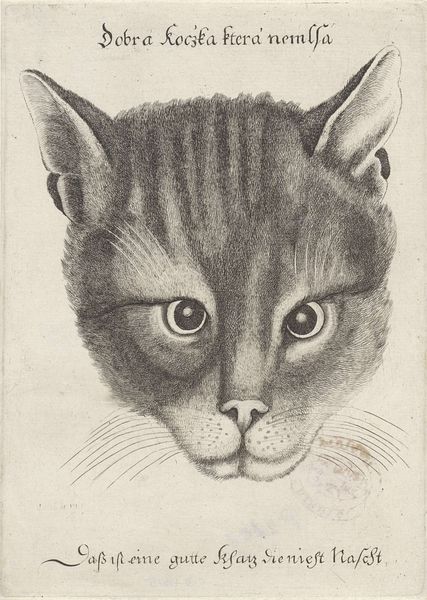
De Katte is / Alhier gewis; Een visken wil zy eeten: / Maar katten fel / En muyzen snel; Zal zy ook niet vergeeten 1725 - 1780
0:00
0:00
johannesiikannewet
Rijksmuseum
drawing, print, paper, ink, engraving
#
portrait
#
drawing
#
blue ink drawing
#
quirky sketch
#
dutch-golden-age
# print
#
pen sketch
#
figuration
#
paper
#
personal sketchbook
#
ink
#
ink drawing experimentation
#
pen-ink sketch
#
sketchbook drawing
#
watercolour illustration
#
genre-painting
#
storyboard and sketchbook work
#
sketchbook art
#
engraving
Dimensions: height 411 mm, width 309 mm
Copyright: Rijks Museum: Open Domain
Editor: This is a charming engraving from between 1725 and 1780, titled "De Katte is" by Johannes Kannewet. It’s a very simple image of a cat. There's something so direct and almost childlike about its depiction. What stands out to you when you look at this print? Curator: What immediately grabs me is the explicit link to commerce; look, it says Kannewet was a bookseller! Prints like these weren’t just art objects. They were a form of public communication, meant for circulation and consumption, not necessarily destined for a gallery. This kitty likely adorned the homes of everyday people. Does that alter your perspective? Editor: Definitely! It makes me think about who might have purchased this and why. Was it meant to be humorous? Educational? Curator: Exactly! The Dutch Golden Age had a booming print market. Prints weren't isolated things, they existed within a system of production and distribution, often reflecting broader societal values or providing commentary. The text above the image -- have you deciphered it? It mentions the cat wants a fish but won’t forget the mice! So, allegorically speaking, what could the fish and mice signify to that audience, and how might it impact the reading of this illustration? Editor: I suppose it suggests a dual threat... the cat embodies a sense of impending peril for different potential "preys." I hadn’t considered that at all, focusing solely on the image itself. Curator: Context shapes how we read an image, and how that image participates in shaping public perceptions and sometimes solidifying specific perspectives. Even simple illustrations like this contributed to the visual landscape of the time. Editor: So, it’s not just a cute cat drawing; it's a window into the world of 18th-century Dutch society! I’ll never look at an old print the same way. Curator: Precisely! Art is always more than just the object itself; it is also the set of social, historical and sometimes, institutional dynamics.
Comments
No comments
Be the first to comment and join the conversation on the ultimate creative platform.
